Best of CES 2021: The Top 20 PCs, Mobile Devices And Wearables
Our Best of CES roundup includes our picks for the top 20 laptops, desktop PCs, smartphones, 2-in-1 tablets and wearable devices that were unveiled at CES 2021.

Best of CES 2021
If you browsed the all-digital CES 2021 showcase this week in search of the latest and greatest PCs--especially laptops—it’s unlikely you were disappointed. The online showcases included a massive number of innovative new laptops (and even a few desktops) from PC makers including Lenovo, HP, Dell and Dynabook. And while hands-on time was not an option this year, we’ve done our best to round up the best new laptops and desktop PCs that we spotted at the online show. We’ve attempted to do the same with rounding up the coolest new mobile devices at CES-—ncluding 5G smartphones and 2-in-1 tablets—as well as the hottest wearable devices unveiled at CES, such as AR smart glasses and wireless earbuds. All in all, CES 2021 still turned out to be a big event in terms of announcements of cutting-edge devices, with vendors including Samsung, Microsoft and Acer also among those that launched major new products at the show.
What follows is our Best of CES roundup featuring our picks for the top 20 laptops, desktop PCs, smartphones, 2-in-1 tablets and wearable devices that were unveiled at CES 2021.
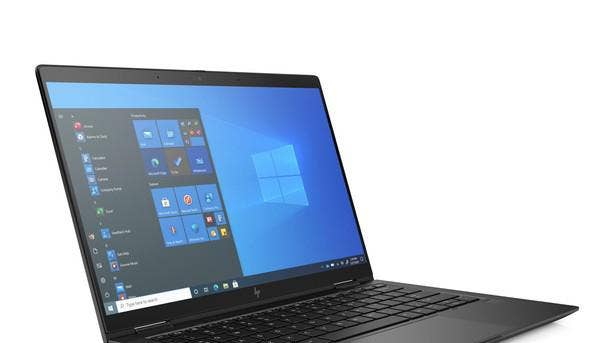
HP Elite Dragonfly Max
At CES 2021, HP expanded its business-focused Elite Dragonfly portfolio with a brand-new model, the Elite Dragonfly Max. The new convertible notebook continues the emphasis on portability with its starting weight of just 2.49 pounds and thickness of 0.63 of an inch. The Elite Dragonfly Max stands out with an emphasis on advanced collaboration features—including a 5-megapixel camera (compared with a 1.2-megapixel camera on the Elite Dragonfly G2) and four wide-range microphones that are optimized for conferencing (compared with three on the G2 model). Meanwhile, the 13.3-inch display on the Elite Dragonfly Max includes HP’s Eye Ease technology for reduced blue light, while the notebook features strong performance with its 11th-generation Intel Core processors (up to Core i7 vPro) and up to 32 GB of RAM. Other key capabilities include integrated Tile tracking (in the event the laptop goes missing) and support for 5G connectivity or LTE connectivity. The HP Elite Dragonfly Max is expected to be available in January.
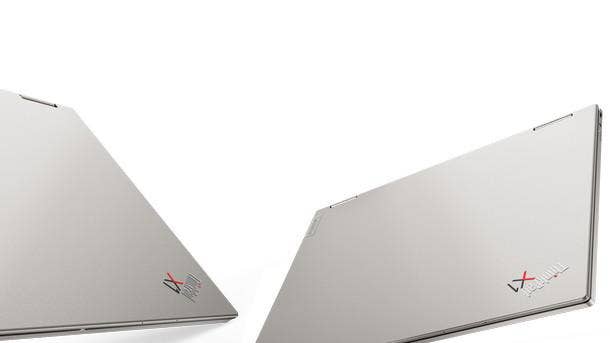
Lenovo ThinkPad X1 Titanium Yoga
As the newest addition to Lenovo’s ThinkPad X1 line, the ThinkPad X1 Titanium Yoga stands out as the company’s thinnest ThinkPad device to date, at 0.45 of an inch thick. The convertible laptop—which gets its name from the titanium material that covers the exterior of the device—is also lightweight at 2.54 pounds. The ThinkPad X1 Titanium Yoga comes with a 13.5-inch display with 2,256 x 1,504 resolution, 450 nits of brightness, a 3:2 aspect ratio and support for Dolby Vision HDR. Other key features include optional 5G or LTE connectivity, support for Wi-Fi 6 and 11th-generation Intel Core processors (up to Core i7 vPro). And to assist with collaboration, the ThinkPad X1 Titanium Yoga includes four far-field microphones, a Dolby Atmos Speaker System and an HD camera. The Lenovo ThinkPad X1 Titanium Yoga will be available to order in January.
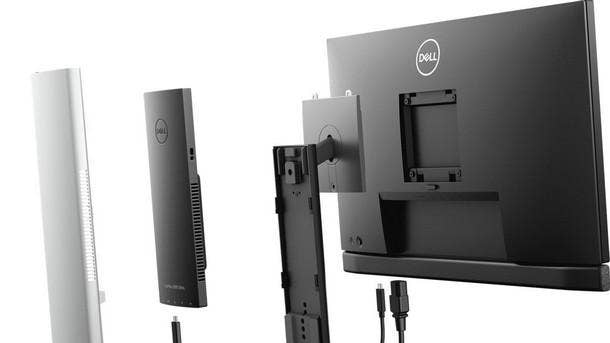
Dell OptiPlex 3090 Ultra/OptiPlex 7090 Ultra
In connection with CES 2021, Dell unveiled a more affordably priced model for its modular form-factor desktop PC, with the launch of the OptiPlex 3090 Ultra (pictured). That model joins the new OptiPlex 7090 Ultra, an update to the original OptiPlex 7070 Ultra. The OptiPlex Ultra PCs come in a form factor that is small enough to fit entirely inside the back of a custom monitor stand, offering a “zero-footprint” desktop PC design while still providing full desktop-level performance, according to Dell. The new OptiPlex Ultra models include 11th-generation Intel Core processors (up to Core i5 for the 3090 and up to Core i7 for the 7090), along with up to 64 GB of 3200MHz DDR4 RAM. Key updates for the OptiPlex 7090 Ultra include the ability to connect to up to four 4K monitors at a time, Dell said. The OptiPlex Ultra models also can be easily removed, allowing them to be swapped out, upgraded or serviced as needed. Dell’s OptiPlex 7090 Ultra and OptiPlex 3090 Ultra will be available Jan. 28.
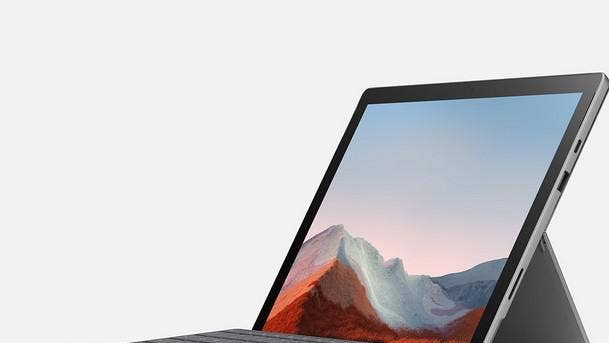
Microsoft Surface Pro 7+ for Business
At CES 2021, Microsoft notably announced a new version of its Surface Pro 2-in-1 tablet—a break from recent years, when the tech giant had mostly stayed out of the spotlight at CES. While the Surface Pro line has always been targeted at professionals, the new variant of the Surface Pro 7—dubbed the Surface Pro 7+ for Business—is designed to be even more business-friendly. The Surface Pro 7+ for Business is “purpose-built with the needs of our business and education customers in mind,” Microsoft said. Main differences from 2019’s Surface Pro 7 include optional LTE Advanced connectivity and a removable SSD to help enhance security and data retention—as well as longer battery life (up to 15 hours on a charge, compared with 10.5 hours on the Surface Pro 7). The Surface Pro 7+ for Business also moves up to 11th-generation Intel Core processors, from the 10th-generation Intel chips of the Surface Pro 7, for a performance boost of more than 2X, according to Microsoft. The Surface Pro 7+ for Business retains the 12.3-inch display size of the original version, while also continuing to include both USB-C and USB-A ports.
The Microsoft Surface Pro 7+ is available to order now through local resellers, and will begin shipping at the end of this week.
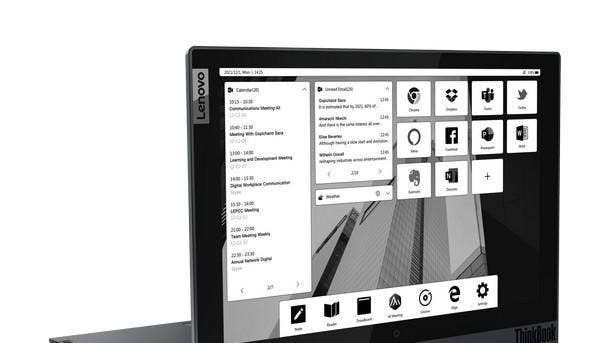
Lenovo ThinkBook Plus Gen 2 i
Like on Lenovo’s original ThinkBook Plus, the standout feature on the second-generation model is the inclusion of an E Ink display on the top cover. But for the ThinkBook Plus Gen 2 i, the E ink display has been expanded to 12 inches from 10.8 inches previously—while the resolution of both the E ink display and the main display have been increased to 2,560 x 1,600 (from 1,920 x 1,080 previously). Meanwhile, along with using the E ink display with a digital pen and for getting notifications, the top display can now run productivity apps while the lid is still closed.
Other improvements include a more portable form factor at 2.86 pounds (versus 3.08 pounds originally) and a thickness of 0.54 of an inch (compared with 0.68 of an inch previously). The notebook’s 13.3-inch main display also now features a 16:10 aspect ratio with reduced blue light technology and includes slimmer bezels for a 90 percent screen-to-body ratio (compared with 78 percent originally). Additional key features include a new garaged pen that automatically launches certain apps; up to 15 hours of battery life; 11th-generation Intel Core processors (up to Core i7); and wireless charging with the use of an optional ThinkBook Charging Mat (leveraging Power by Contact technology from Energysquare). The Lenovo ThinkBook Plus Gen 2 i will be available during the first quarter.
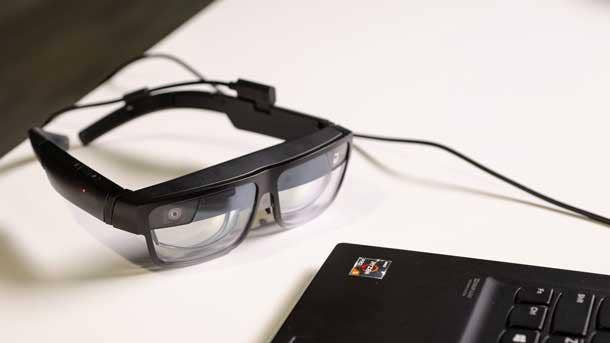
Lenovo ThinkReality A3
Lenovo’s biggest CES product announcement outside its notebook lineup was in the realm of augmented reality, with the launch of the ThinkReality A3, a new version of the company’s smart glasses. The ThinkReality A3 is aimed at enabling improved workflows and training—for instance by overlaying information atop the real-world view to assist with the task at hand. The device represents “one of the most advanced and versatile enterprise smart glasses to come to market,” Lenovo said. The company unveiled several variants of the smart glasses, including the ThinkReality A3 PC Edition, which tethers to a Lenovo ThinkPad laptop or mobile workstation. This version of the smart glasses can display customized “virtual monitors,” which enable the use of Windows applications that are placed in the user’s field of view. The virtual monitors “expand the value of PCs, creating more productivity, privacy and immersive experiences for industries like finance, architecture and engineering,” as well as for remote and mobile workers who have limited space, Lenovo said. Meanwhile, the ThinkReality A3 Industrial Edition—which tethers to certain Motorola smartphones—provides AR support for tasks in challenging work environments. Lenovo ThinkReality A3 smart glasses are expected to be available in mid-2021.
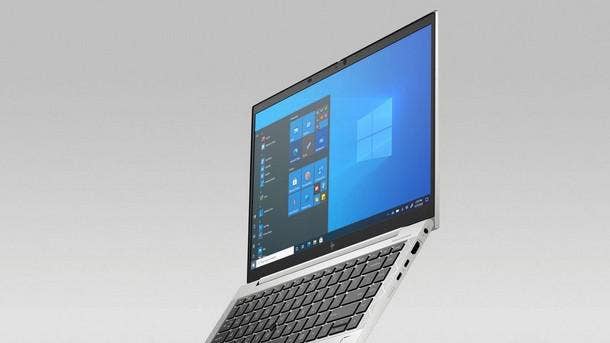
HP EliteBook 840 Aero G8
HP used CES 2021 to launch a major upgrade for its widely used EliteBook 800 notebook series, with the debut of the EliteBook 840 Aero G8. The laptop stands out by offering a far more portable design than past models in the EliteBook 800 portfolio, which is targeted at mainstream corporate workers. The EliteBook 840 Aero G8 features a starting weight of 2.5 pounds, making it a half-pound lighter than the standard EliteBook 840 G8. The notebook also offers numerous other notable features including an optional Sure View Reflect integrated privacy screen on the 14-inch display; slim bezels around the display for an 85 percent screen-to-body ratio; integrated Tile tracking; an HD camera; and three microphones. On performance and connectivity, the EliteBook 840 Aero G8 is available with 11th-generation Intel Core processors (with optional vPro), up to 64 GB of RAM and optional 5G or LTE connectivity. The HP EliteBook 840 Aero G8 is expected to be available in March.
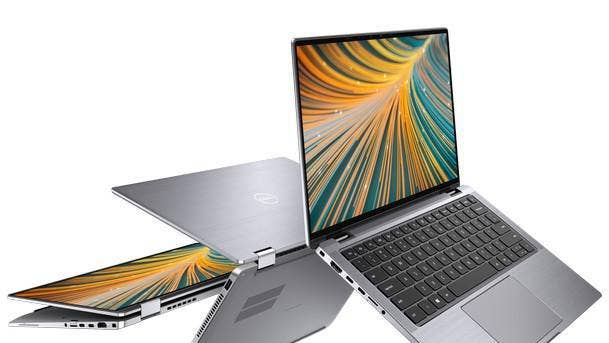
Dell Latitude 9420
At CES 2021, Dell Technologies unveiled its Latitude 9420 notebook, available both as a 2-in-1 or a clamshell model. The notebook will include a 14-inch display with FHD+ resolution (clamshell model) or QHD+ resolution (for the 2-in-1 model), as well as a 16:10 aspect ratio to offer a 5 percent larger viewing area and brightness of 500 nits. The clamshell version has a starting weight of 2.9 pounds and a thickness of just 0.55 of an inch. In terms of connectivity, the Latitude 9420 will offer optional support for high-speed 5G or LTE, along with Wi-Fi 6. Key collaboration features include a built-in speakerphone, dedicated mute and mic keys, and an enhanced webcam with capabilities for background blur and automatic light correction.
Other key features include ExpressSign-in 2.0—which leverages Intel Visual Sensing Technology to enable faster auto-wake and auto-lock—and the AI-powered Dell Optimizer, which enhances app performance through learning the way that each individual user works. Meanwhile, on security, the Latitude 9420 also offers what Dell is calling the “industry’s first automatic webcam shutter,” which “knows when to automatically open or close by syncing with your videoconferencing applications,” the company said. The Dell Latitude 9420 will be available in the spring.
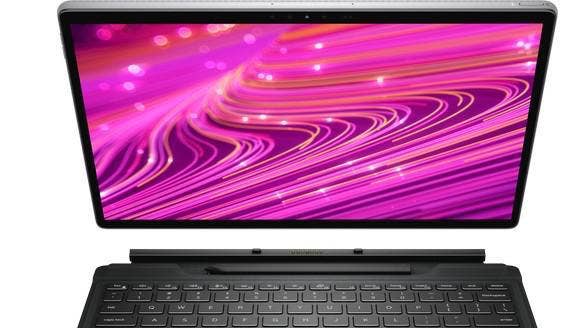
Dell Latitude 7320 Detachable
Dell also used CES to roll out its latest 2-in-1 tablet offering for business users, with the Latitude 7320 Detachable. The tablet features a new 13-inch display size with FHD+ resolution and 500 nits of brightness, along with a webcam that’s been enhanced to provide sharper and brighter video (including in low-light situations). Other key capabilities include a digital pen that charges up in just five minutes, improved serviceability in the field and a newly designed folio keyboard that is both sturdy and attractive with its faux suede design, according to Dell. On performance and connectivity, the Latitude 7320 Detachable offers up to the 11th-generation Intel Core i7 with vPro for its processing power as well as support for Wi-Fi 6 and optional LTE connectivity. Availability for Dell’s Latitude 7320 Detachable was not disclosed.
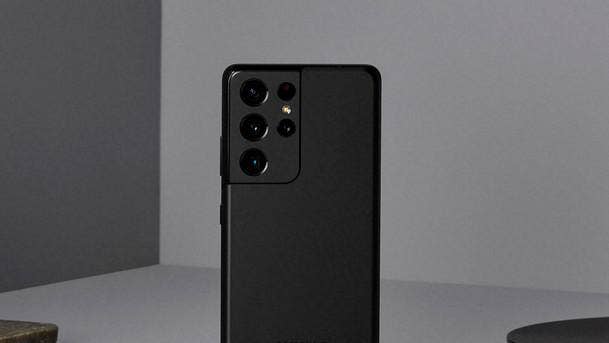
Samsung Galaxy S21 Ultra
In a break from past years, Samsung timed its annual Galaxy S smartphone announcement to coincide with CES. The flagship model in the new series is the Galaxy S21 Ultra, a 6.8-inch device that expands to a quad-camera system (from three cameras on the predecessor model from last year) and works with Samsung’s S Pen stylus—the first time that a Galaxy S series device has featured S Pen support. Other key features include improved resolution (of 515 pixels per inch) on the display with up to 1,500 nits of brightness; automatic adjustment for the refresh rate (between 10Hz and 120Hz) to optimize both viewing quality and battery life; up to 100X zoom on the camera along with a new zoom lock feature for clearer photos; and support for both types of 5G connectivity—sub-6GHz and higher-speed, mmWave 5G.
In terms of design, Samsung has redesigned the camera housing on the back of the phone in what the company is calling its “Contour Cut Camera” housing design. The idea is to blend the camera housing more seamlessly into the phone’s metal frame, Samsung said.
The Galaxy S21 Ultra will be powered by Qualcomm’s new Snapdragon 888, an eight-core chip with a clock speed of up to 2.8GHz, and will offer up to a massive 16 GB of RAM. Meanwhile, key business features on the Galaxy S21 Ultra include improved support for the DeX Android desktop. The device will now support wireless connectivity to DeX on PCs and Macs, in addition to wireless connectivity to displays that support Miracast. The Samsung Galaxy S21 Ultra is available to order now with the device shipping on Jan. 29.

Samsung Galaxy S21 And S21+
Samsung also unveiled Galaxy S21 and S21+ smartphone models in connection with CES. The 6.2-inch Galaxy S21 and 6.7-inch Galaxy S21+ will share many of the same features—including an identical three-camera system on the rear with up to 30X zoom and the zoom lock feature; the redesigned camera housing; support for both types of 5G connectivity; FHD+ (2,400 x 1,080) resolution on the display; and an adaptive refresh rate between 48Hz and 120Hz. A notable difference from the Galaxy S21 Ultra is that the S21 and S21+ will feature a flat display design, while the S21 Ultra will offer an “edge” display design that brings more of a curve. On performance, the Galaxy S21 and S21+ will also feature Qualcomm’s new eight-core Snapdragon 888, while offering less RAM than the S21 Ultra at 8 GB. For business users, the S21 and S21+ will include the same enhanced DeX support, including support for wireless connectivity to DeX on PCs and Macs.
Samsung also said that it will also be launching an Enterprise Edition model of the Galaxy S21 in the U.S., with no incremental costs to businesses. The Enterprise Edition will include a year of free access to the Knox Suite, which provides tools for mobile enrollment, setup and endpoint management. The Enterprise Edition also includes a tiered product life cycle for five-year security maintenance release support.
The Samsung Galaxy S21, S21+ and S21 Enterprise Edition are available to order now with the devices shipping on Jan. 29.
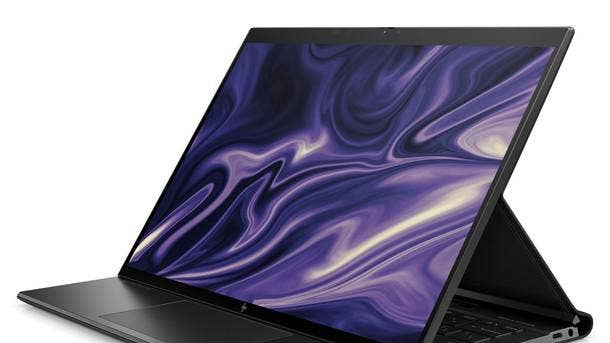
HP Elite Folio
Building on its consumer-focused Spectre Folio, HP used CES to launch a new device featuring the same distinctive design but aimed at businesses—the HP Elite Folio. Like on the Spectre Folio, HP’s Elite Folio features a “pull-forward” mode where the 13.5-inch screen can come forward and magnetically lock into position closer to the user’s viewing. The Elite Folio features a magnesium chassis (rather than the leather covering on the Spectre Folio) and includes an integrated digital pen in the keyboard. The notebook is also powered by the Qualcomm Snapdragon 8cx Gen 2 5G processor, enabling optional 5G on the device. Other key features on the Elite Folio include up to 24.5 hours of battery life, an optional integrated Sure View Reflect privacy display, a 76-degree field of view webcam, a dual microphone array and high-definition Bang & Olufsen speakers. The HP Elite Folio is planned for availability in February.
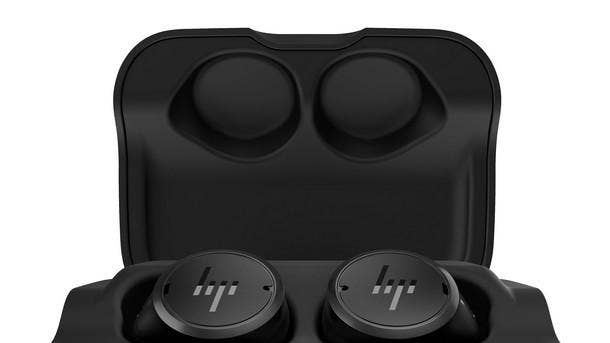
HP Elite Wireless Earbuds
HP also used CES 2021 to launch its first-ever earbuds product, the HP Elite Wireless Earbuds, with a focus on enabling collaboration for business users. The earbuds offer Active Noise Cancellation, presets for different environments and customized sound tuning, using an app that calibrates the earbuds to the user’s hearing profile. The HP Elite Wireless Earbuds also feature the ability to connect to multiple devices—across Windows 10, iOS, macOS and Android—and enable simplified switching between devices. The HP Elite Wireless Earbuds are expected to be available in April.
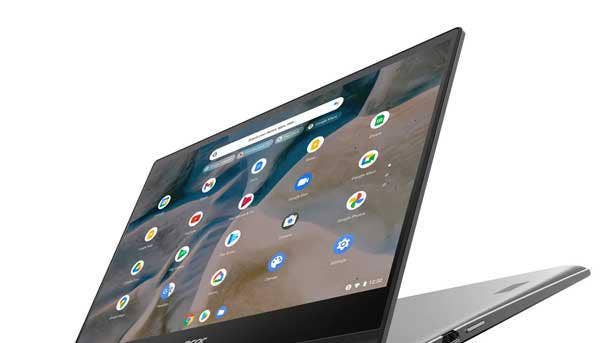
Acer Chromebook Enterprise Spin 514
The Acer Chromebook Enterprise Spin 514 is the company’s first Enterprise Chromebook to feature AMD Ryzen 3000 C-Series processors and AMD Radeon graphics, which enable strong performance, responsiveness and battery life (up to 10 hours). Aimed at business users, the Acer Chromebook Enterprise Spin 514 also stands out from the base model of the laptop with additional security and management capabilities. The convertible notebook includes a 14-inch touch display with FHD resolution, and the device is highly durable with Gorilla Glass on the display and a reinforced aluminum chassis. Other notable features include slim bezels around the display (for a 78 percent screen-to-body ratio) and a thickness of 0.68 of an inch, as well as options for up to 16 GB of RAM and up to 256 GB of storage. The Acer Chromebook Enterprise Spin 514 will be available in March.
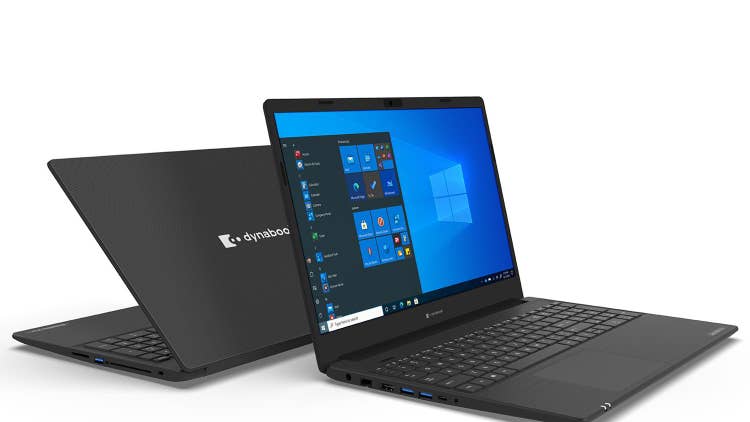
Dynabook Satellite Pro L50
Dynabook Americas, formerly Toshiba America Client Solutions, at CES revived Toshiba’s former Satellite Pro laptop series with new business-focused models including the Dynabook Satellite Pro L50. The notebook features a 15.6-inch FHD display, a 10th-generation Intel Core i7 processor, discrete Nvidia GeForce MX250 graphics, 16 GB of RAM and 512 GB of storage. Other features include an HD webcam, dual-array microphones and a wide selection of ports (including USB-A, USB-C, HDMI and Ethernet). On portability, the Satellite Pro L50 weighs 4.07 pounds and measures 0.74 of an inch thick. In addition, Dynabook introduced two other new models in the series—the 14-inch Satellite Pro C40 and the 15.6-inch Satellite Pro C50. Dynabook said that IT distributor Synnex will oversee U.S. distribution for the new Satellite Pro series laptops.
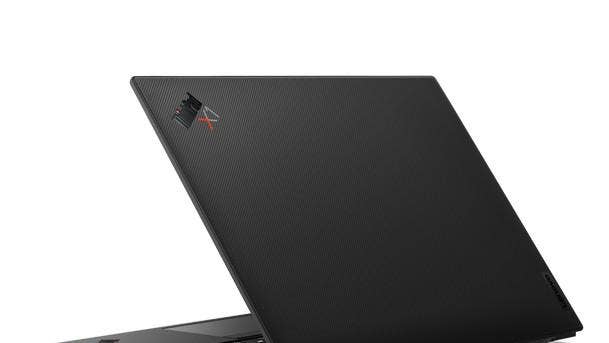
Lenovo ThinkPad X1 Carbon (Gen 9)
For the ninth-generation edition of the popular ThinkPad X1 Carbon, Lenovo has rolled out a number of updates including a new 16:10 aspect ratio and reduced blue light on the 14-inch display—which will offer a choice between UHD or FHD resolution (up to 500 nits of brightness). Other new features and capabilities with the ninth-generation X1 Carbon include an integrated fingerprint reader on the power button; optional 5G or LTE connectivity; a wider touchpad; and support for Dolby Voice, which optimizes the performance of the notebook’s microphones and speakers. Dolby Voice features include dynamic leveling, which automatically adapts to voices that are quieter or far away and provides noise suppression to limit background noises and echo.
The new X1 Carbon will also include a larger battery than the previous model, at 57 Whr, to enable battery life of up to 16 hours. On performance, the notebook will be powered by 11th-generation Intel Core processors (up to Core i7 vPro) and be configurable with up to 32 GB of RAM. One thing that hasn’t changed is the X1 Carbon’s ultraportable form factor, which remains at just 2.49 pounds. The Lenovo ThinkPad X1 Carbon, Gen 9, will be available in February.
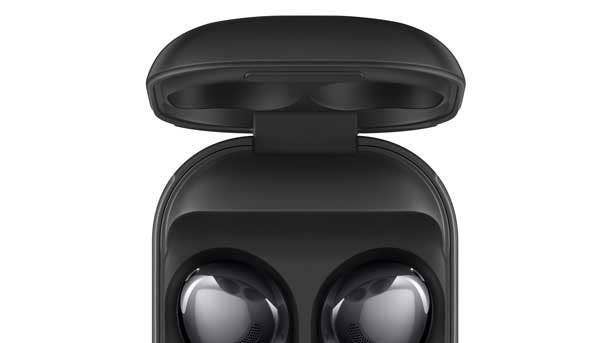
Samsung Galaxy Buds Pro
Along with unveiling its Galaxy S21 series, Samsung this week announced its latest pair of wireless earbuds, the Galaxy Buds Pro. With Active Noise Cancellation, an 11mm woofer and a 6.5mm tweeter, the Galaxy Buds Pro provide “Samsung’s best audio experience yet,” the company said. Several improvements with the Galaxy Buds Pro are targeted at those using the earbuds for work purposes, including with features such as a Voice Pickup Unit and the inclusion of three microphones to enable the user to be heard clearly. One mic on the earbuds comes with a high signal-to-noise ratio to further reduce background noise, while the Galaxy Buds Pro also come with Samsung’s “wind shield” technology. Another key feature is that the earbuds can detect when you are speaking—and can automatically turn down your music when you do so. On battery life, the Galaxy Buds Pro offer up to eight hours of usage on a charge, with 20 additional hours available in the charging case. The Samsung Galaxy Buds Pro are available now.
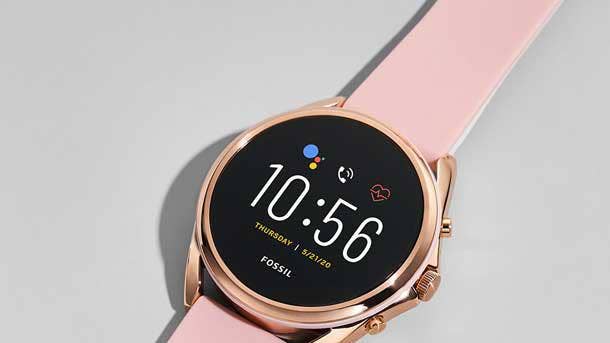
Fossil Gen 5 LTE Touchscreen
Fossil used CES 2021 to introduce its Gen 5 LTE Touchscreen Smartwatch, an Android-based device that is Fossil’s first introduction into the cellular wearables market. The Fossil Gen 5 LTE Touchscreen leverages LTE connectivity from Verizon, the Qualcomm Snapdragon Wear 3100 platform, and Google’s Wear OS to let users make calls and do texting without a mobile phone. When an additional data plan is purchased from Verizon, the watch can be synced to the user‘s mobile phone for voice and text using the same number as the mobile phone. The Gen 5 LTE Touchscreen Smartwatch can also be set up either in-store or remotely via the integrated eSIM chip.
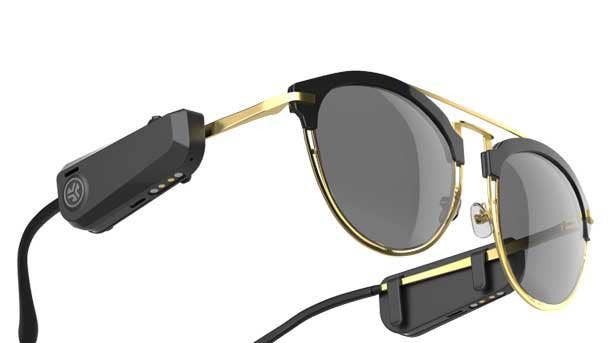
Jlab JBuds
Jlab Audio used CES 2021 to introduce its new JBuds Frames, a device that discretely attaches to a user’s glasses to provide wireless stereo audio on the go. The JBuds Frames consist of two independently operating Bluetooth wireless audio devices—which include 16mm drivers that produce sound that can only be heard by the wearer, not by others. In addition, the device can easily be detached and mounted on other frames when needed.
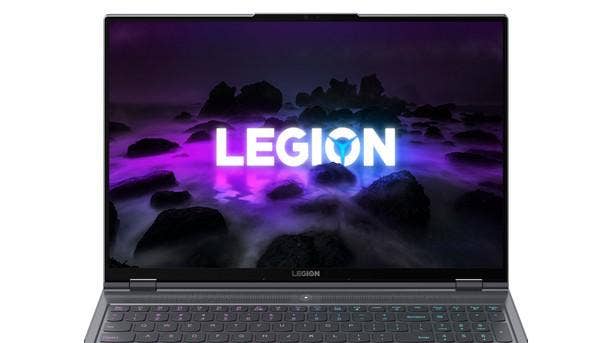
Lenovo Legion 7
Lenovo said that its new Legion 7 laptop will deliver massive performance for gaming through the inclusion of AMD’s new Ryzen 5000 H-series chips. Configuration options go up to the AMD Ryzen 9 5900H mobile processor, offering eight high-performance cores as well as solid battery life (estimated at up to eight hours on a charge). The Legion 7 will also include the latest-generation Nvidia GeForce RTX graphics and up to 32 GB of 3200MHz DDR4 RAM. Meanwhile, Lenovo is touting the Legion 7 as “the world’s first 16-inch QHD gaming laptop,” with its 16-inch display boasting resolution of 2,560 x 1,600, as well as a 165Hz refresh rate. The display also stands out with its 16:10 aspect ratio—offering 11 percent more usable screen real estate for an improved field of view, Lenovo said. The Lenovo Legion 7 is planned for availability in June.